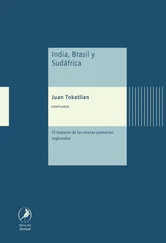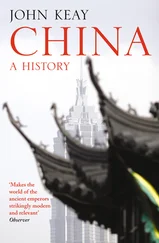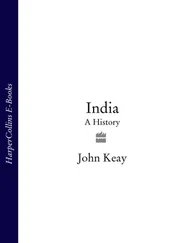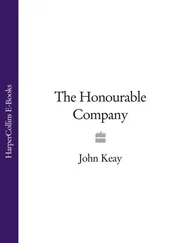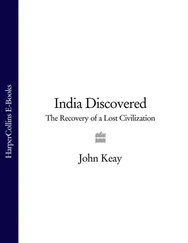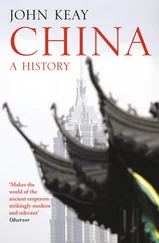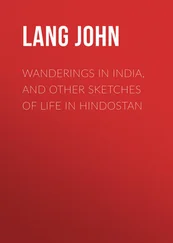As for literature, in the second century BC Patanjali, a Sanskrit grammarian who wrote a commentary on Panini, compiled the standard text on yoga. Mighty compendia of other important human activities followed, with the Manusmriti (‘Manu’s code’ of law), the Kamasutra of Vatsyana, and Kautilya’s Arthasastra all datable in their final form to the second century AD. Meanwhile a Buddhist writer, Asvaghosha of Magadha, may be credited with the first Indian drama; he was a contemporary and protégé of King Kanishka, who would be the age’s nearest equivalent to an Ashoka. Subsequently the great tradition of Sanskrit drama got off to a more certain start with Bhasa, whose prolific output of plays probably dates from the third century AD. A debt to his work would be acknowledged by Kalidasa, the Sanskrit Shakespeare, who may have been a near-contemporary although he is usually assigned to the cultural efflorescence that awaited the Guptas after 320. Perhaps the ‘dark’ centuries on either side of the year zero should be seen more as a sprightly preface to this ‘golden age of the Guptas’ than as a dire postscript to that of the Mauryas.
The ‘Dark Age’ looks to have been one of enlightenment and, even more paradoxically, the ‘Age of Invasions’ looks to have been one of expansion. For every incursion by non-Indians from central Asia, there is good evidence for an excursion by Indians into south-east Asia – or even back into central Asia. Hellenised kingdoms on the upper Indus are matched by Indianised kingdoms on the lower Mekong, Roman trading stations on the Indian coast by Indian trading stations on the Malay peninsula. Just as the archaeology of northern India is being invaded by uncompromising images of Greek adventurers and booted warlords from beyond the Oxus, so that of Sumatra and Sinkiang is invaded by serene Buddhas and handsome stupas. That first Indian drama by Asvaghosa came to light not in some Magadhan archive but in a horde of manuscripts found in the oasis city of Turfan, between the Takla Makan and the Gobi desert on China’s silk route. For every inscription in Greek or Sogdian script that is chiselled into India’s rocks another in Brahmi or Kharosthi is etched in the cliffs of Afghanistan or echoed in a stele on the coast of Vietnam.
In short, the diaspora of India’s culture began just as India itself apparently buckled before a succession of intruders. Both processes would continue, with intermissions, for the next two thousand years. Indeed the great paradox of political vulnerability in the midst of commercial and cultural dynamism may be considered one of Indian history’s distinctive features. If for no other reason than to explore the genesis of such a phenomenon, the underrated interlude between the glorious Mauryas and the golden Guptas merits attention.
IN THE DYNASTIC WILDERNESS
Of Ashoka’s Mauryan successors in the third to second centuries BC we know practically nothing except that they lost most of their inheritance. There were at least six of them, and they continued to rule, mostly from Pataliputra, for another fifty years. One, Dasaratha, may have been Ashoka’s grandson and immediate successor. In the only inscription certainly attributable to the later Mauryas, he dedicated some caves to the Ajivikas. Another, Brhadratha, was by common consent the last of the dynasty; a half-wit, he was murdered by his commander-in-chief. There is nothing to suggest that any of them ever exercised authority in the Deccan or in Orissa, and there is reason to suppose that many other Mauryan provinces, including those in Afghanistan, Gandhara, Kashmir, the Panjab and perhaps Malwa, all broke away at an early stage. Reasons suggested for this rapid decline include the economic crisis implied by an adulteration of the coinage, the reluctance to use force which was supposedly inherent in dhamma , and the vulnerability of Ashoka’s personalised authority to the presumed failings of his successors.
It is perhaps also worth reflecting on the nature of an empire which could so rapidly disintegrate. For instance, the scatter of Ashokan inscriptions in Karnataka (Mysore) and Andhra Pradesh (Hyderabad) should probably not be interpreted as evidence that Mauryan authority was ever effective throughout the Deccan. Instead, the empire should be seen as consisting of corridors of authority connecting pockets of agricultural, mineral (many of the southern inscriptions are in a gold-mining area), commercial or strategic importance. Beyond this carefully administered root-structure of nodes and conduits lay wild tracts of hill, forest and desert whose peoples produced no surplus of taxable significance. Here the Mauryan policy of containment, if they proved disruptive, or of neglect, if peaceable, may have been an early casualty of retrenchment. For all the evidence of an elaborate fiscal and judicial system under the Mauryas, we know remarkably little about the sanctions which enforced it. Along the highways, as well as rest houses and shade trees, one might expect some mention of garrisons, forts and escorts; but there is none. Mauryan authority, theoretically so extensive and invasive, may, in practice and beyond the confines of Magadha itself, have always been localised and vulnerable.
The last Maurya was murdered and supplanted by his commander-in-chief in about 180 BC. Pushyamitra, the assassin, was a brahman; his family came from Ujjain, where they had once served in the Mauryan administration. An inscription testifies to his performing two horse-sacrifices, and he is portrayed in Buddhist texts as no friend to the sangha (the monastic community). Perhaps, after a century of Mauryan patronage of the heterodox sects, Pushyamitra headed an orthodox brahmanical backlash. The dynasty he founded is known as the Shunga and his successors presided over a still disintegrating kingdom for about 110 years. The last Shunga, being reportedly ‘overfond of women’s company’, 3was assassinated by the daughter of one of his female companions. Vasudeva, his brahman minister, is said to have instigated the crime and it was he who duly founded a new dynasty. This was the Kanva, which lasted barely fifty years and of which almost nothing is known. Thereafter the kingdom of Magadha virtually disappears from the record for three centuries.
The Shungas and the Kanvas, like the later Mauryas, had been challenged on many fronts. An inscription in Orissa tells of the great king Kharavela of Kalinga who, though apparently a devout Jain, led his forces deep into the Deccan as well as invading Magadha and taking Pataliputra. Immense booty was accumulated, Kharavela’s horses and elephants were watered in the Ganga, and the king was styled a cakravartin , or world-ruler. Perhaps it was by way of a Kalingan revenge for Ashoka’s triumph of 260 BC. But Kharavela’s dates remain a mystery and his inscription is in ‘a rather flowery and pompous style and doubtless much of it was royal panegyric’. 4The only obvious inference is that Kalinga had long since broken away from Magadhan rule and now held its neighbour in contempt.
Amongst other adversaries over whom Kharavela was supposedly victorious, the inscription mentions the Shatavahana kings of the Deccan and a confederation of Tamil rulers in the extreme south, plus the Yavanas , or Greeks. As will be seen, the Deccan and the south begin to feature prominently in Indian history from about the last century BC. Slightly earlier the Yavanas had led the procession of intruders who now descended on India from the north-west. They originated in Bactria, or northern Afghanistan, where the Achaemenids had established a Greek colony. Alexander had augmented it, and over it Seleucus had briefly reasserted Macedonian authority before, some time during the reign of Ashoka, one Euthydemus had declared an independent kingdom. His successors, who were not necessarily his descendants, extended Bactrian rule to much of Afghanistan. Then, taking further advantage of the break-up of the Mauryan empire, some of them passed on down the Kabul river to the Indus and the Panjab.
Читать дальше


